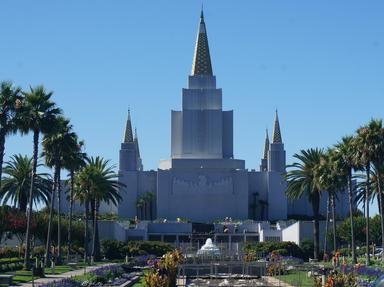Quiz Answer Key and Fun Facts
1. The LDS church was founded with six members, three of whom were witnesses to the golden plates upon which ancient history was written. Who was *not* one of these Three Witnesses (knowing that the selection of these witnesses wasn't rigged)?
2. In order to print the first edition of the Book of Mormon, the church needed $3000 dollars in order to pay for it. What did founder Martin Harris do to foot the bill for the printing and attempt to reap rewards for the book?
3. When in Palmyra NY, members of the LDS Church experienced a lot of persecution. They eventually decided to move their church, but where?
4. When the Mormons arrived in Illinois, they settled in a swampy area in the west that they had to pay for. The city they purchased was rechristened Nauvoo. What was the site called previous to Mormon purchase?
5. Polygamy was a widespread and acceptable practice in the initial LDS Church, only repudiated many years later when the US Supreme Court brought judgement against the Church during World War I.
6. While in Missouri the LDS members suffered heaps of persecution, including an Extermination Order given by the governor. Which of these events did *not* happen there?
7. Joseph Smith was killed by a mob while he was being detained on a trumped-up charge. Reminiscent of the Punic Wars, where did this happen?
8. It was hoped (by the old governor of Missouri) that when Joseph Smith was killed, the Mormon church would fall apart. Who eventually took over as President of the church after the death of Joseph Smith?
9. The early LDS Church established new settlements as far north as Alberta, Canada, and as far south as Mexico.
10. At the height of the persecution, the Mormons decided to go west and establish new colonies in the Great Salt Valley of Utah. Which of these was *not* a reason that they decided to move there?
Source: Author
LeoDaVinci
This quiz was reviewed by FunTrivia editor
looney_tunes before going online.
Any errors found in FunTrivia content are routinely corrected through our feedback system.
